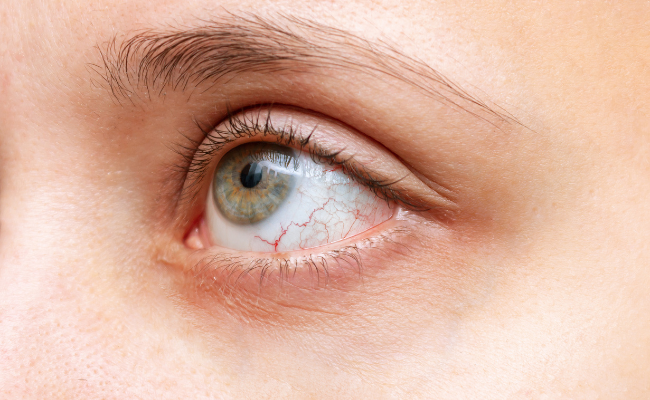How to Treat Uveitis?
- December 12, 2023
- No Comments

What is Uveitis?
Uveitis, an intricate and potentially vision-threatening eye condition, involves inflammation of the uvea—the eye's central layer. Comprising the iris, ciliary body, and choroid, the uvea is vital for supplying nutrients and oxygen to the eye. Uveitis can manifest suddenly, affecting individuals of all ages, and if left untreated, it may lead to a range of complications, from mild discomfort to severe cases resulting in rapid vision loss. Effective management requires a prompt response, understanding its causes, and implementing a targeted treatment plan.
Characterized by red eyes, eye pain, and inflammation, uveitis encompasses various diseases primarily impacting the uvea. Failing to address it promptly may result in irreversible consequences, such as permanent blindness or significant vision loss. Hence, recognizing symptoms and timely intervention are essential in mitigating the potential severity of these ocular disorders.
Why is Uveitis a Concern?
Uveitis poses a significant threat to vision due to the inflammation it incites within the eye. The inflammatory response can affect vital eye structures, leading to complications such as glaucoma, cataracts, and damage to the optic nerve. The complexity of uveitis lies in its ability to impact not only the uvea but also neighboring tissues, necessitating comprehensive treatment strategies.
If left untreated, uveitis can progress and cause long-term visual impairment. The inflammation may lead to the formation of scar tissue, affecting the eye's delicate balance and impairing its ability to function properly. Additionally, the increased intraocular pressure resulting from uveitis can contribute to the development of glaucoma, a condition characterized by damage to the optic nerve.
How does Uveitis Develop?
Understanding the etiology of uveitis is crucial for devising an effective treatment plan. Uveitis can be triggered by various factors, including infections, autoimmune diseases, trauma, or exposure to toxins.
- Infectious Causes: Infections such as herpes, syphilis, toxoplasmosis, or tuberculosis can contribute to uveitis. These infections may directly affect the uvea or induce an inflammatory response as part of the body's defense mechanism.
- Autoimmune Diseases: Uveitis is frequently associated with autoimmune diseases, where the immune system mistakenly targets the body's own tissues. Conditions like rheumatoid arthritis, lupus, and ankylosing spondylitis are examples of autoimmune diseases linked to uveitis.
- Trauma: Physical trauma to the eye, whether blunt or penetrating, can induce inflammation in the uvea. Traumatic uveitis often requires immediate attention to minimize the risk of complications.
- Systemic Conditions: Certain systemic conditions, such as sarcoidosis, can also contribute to the development of uveitis. In these cases, systemic treatment targeting the underlying condition is essential for managing uveitis effectively.
Treatment Solutions for Uveitis
The treatment of uveitis typically involves a multi-faceted approach tailored to the specific cause and severity of the inflammation. Various therapeutic modalities are employed to address the condition comprehensively.
- Anti-Inflammatory Medications: Corticosteroids are a cornerstone of uveitis treatment, serving to suppress inflammation within the eye. These medications may be administered topically as eye drops, injected directly into the eye, or taken orally, depending on the severity and location of the inflammation.
- Immunosuppressive Drugs: In cases where uveitis is associated with autoimmune diseases, immunosuppressive drugs are often prescribed. These medications help modulate the immune response, preventing it from attacking the uvea. Methotrexate, azathioprine, and cyclosporine are examples of immunosuppressive drugs used in uveitis treatment.
- Biologic Agents: Biologic agents, such as TNF inhibitors, have demonstrated efficacy in managing uveitis, particularly in cases related to specific autoimmune conditions like ankylosing spondylitis or juvenile idiopathic arthritis. These agents target specific components of the immune system to control inflammation.
- Antibiotics or Antivirals: If uveitis is triggered by an infection, antibiotics or antiviral medications may be prescribed to eliminate the causative agent. This approach addresses the underlying infection, resolving the inflammation in the process.
- Surgery: Surgical intervention may be necessary in cases where complications arise from uveitis. Procedures to manage glaucoma, remove cataracts, or repair retinal damage are considered when medical treatment alone is insufficient.
Benefits of Uveitis Treatment
- Preservation of Vision: The primary objective of uveitis treatment is to preserve vision. By effectively managing inflammation, the risk of complications leading to permanent vision loss is significantly reduced.
- Pain and Discomfort Relief: Uveitis often presents with symptoms such as pain, redness, and sensitivity to light. Treatment provides relief from these discomforts, enhancing the patient's overall comfort and well-being.
- Prevention of Complications: Timely and appropriate treatment helps prevent complications such as glaucoma and cataracts, which can arise from untreated uveitis. Addressing the underlying inflammation minimizes the risk of long-term ocular damage.
- Improved Quality of Life: Effective uveitis treatment contributes to an improved quality of life for affected individuals. Relief from symptoms and the prevention of complications positively impact daily experiences, allowing for a more comfortable and functional lifestyle.
- Management of Underlying Conditions: When uveitis is associated with an underlying autoimmune or infectious condition, treatment not only addresses the eye inflammation but also manages the broader health issue. This holistic approach contributes to the overall well-being of the patient.
Comments (0)